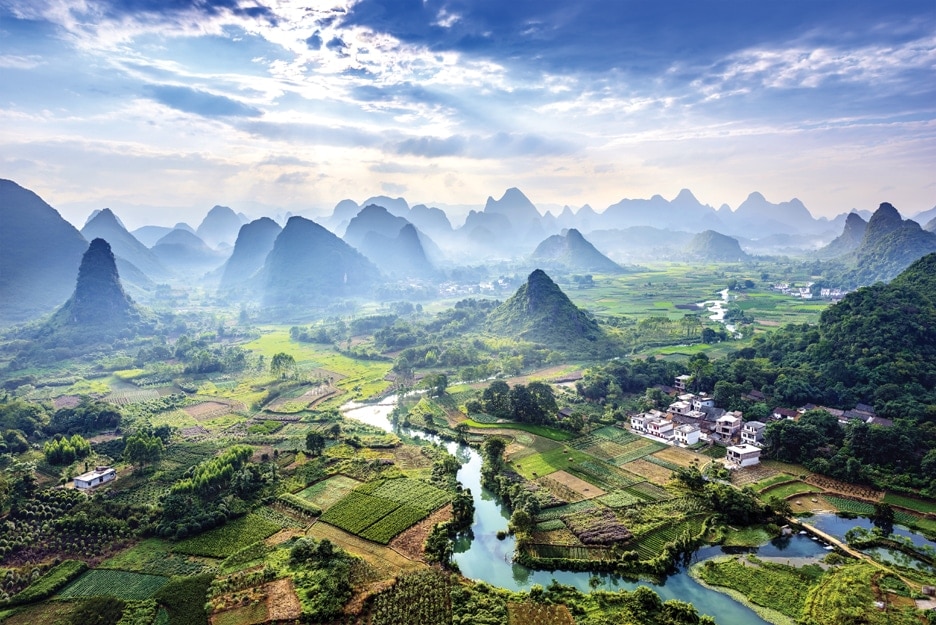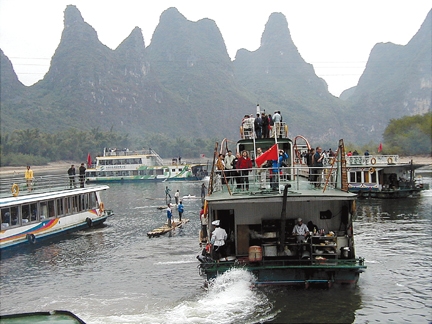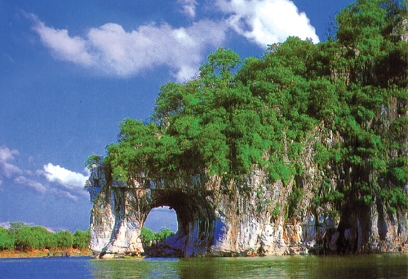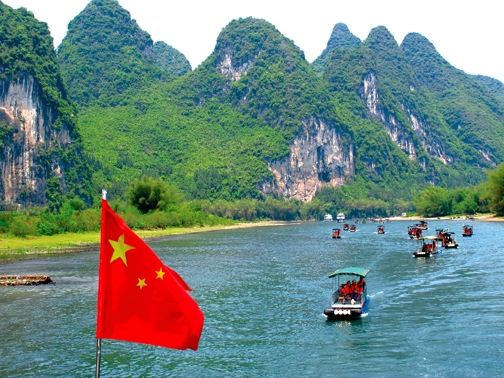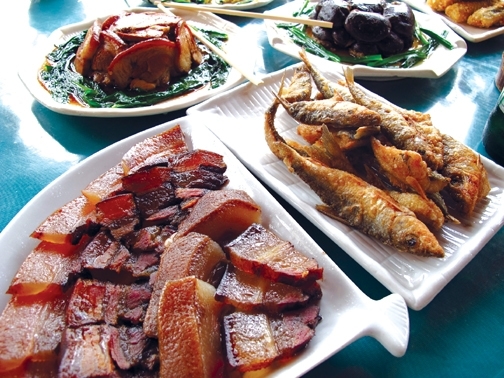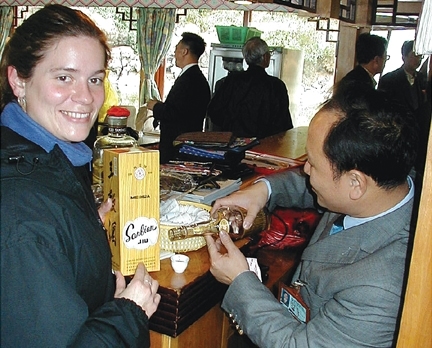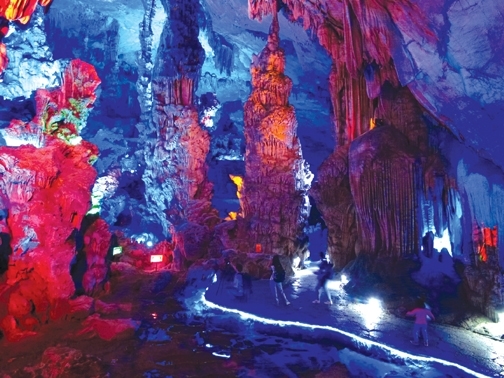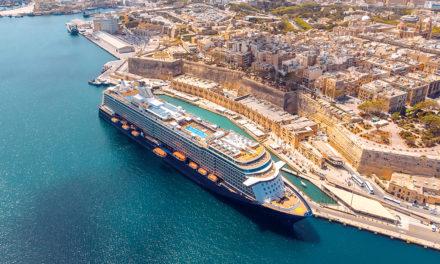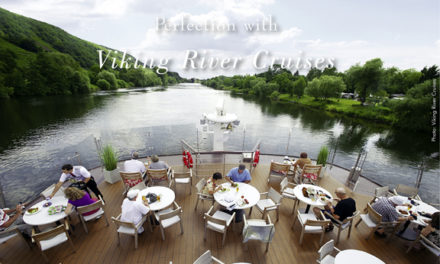Cruise
Cruise Up the Lijiang River from Guilin, Pearl of Southern China
by Habeeb Salloum, M.S.M.
Located in the middle of one of the world’s most natural-stunning landscapes, Guilin has long laid claim to having the most beautiful scenery in China. The city with a population of close to one million, a small city by Chinese standards, is encircled by a countryside of weirdly shaped Karsts – bizarre stone forests with many formations appearing like camels, elephants, horses, lions and upside-down ice cream cones. It is a fairytale world of strange-looking hills, traversed by clear and sparkling waterways, several of which meander through the city, as well as spectacular caverns of stalagmites and stalactites in endless shapes and forms.
This landscape of unusual limestone hill formations was created over millions of years ago when the region emerged from a seabed. The spectacular Karst tableau was formed by erosion from wind and rain, resulting in the unique landscape one sees today. It is an eerie appearing countryside, captivating all who travel to this part of China.
Since 1973, when the area was opened to visitors, the tourist industry has grown until today it has become second to agricultural products as the mainstay in Guilin’s economy. What the Chinese call the ‘most beautiful attraction on the face of the globe’ or ‘heaven on earth’ is drawing thousands of tourists from both inside and outside China.
For centuries, artists and poets have been fascinated by the sheer splendour of the panorama, giving them the inspiration to produce excellent works of art therefore transforming Guilin into a cultural city. According to a Chinese saying, Guilin’s atmosphere and scenery are the ‘first under heaven’.
One gentle autumn day I found myself in the midst of this amazing landscape when the Sweet Osmanthus were in bloom and their fragrance saturated the air. It seemed that these perfume-defusing shrubs were everywhere. They were so numerous that they have given their name to the city (Guilin mean forest of Sweet Osmanthus).
After an hour’s drive south of Guilin, our group of eleven climbed aboard a riverboat, docked with many others on the 437 km (271 mi) Lijiang River, for a cruise. The usual cruise offered is usually for 83 km (52 mi), but we had come in late autumn and the water in the river was very shallow. Hence, we had to take a bus to Yang-Ti, a village overshadowed by the Karst-shaped hills. The spot is considered to be the most breathtaking sight on the Lijiang River – called by the Chinese a ‘blue ribbon of silk’ and the dominating hills ‘hair pins of jade’.
Now as our boat began to move down stream through a natural art gallery, I looked around me. It was truly an awesome sight. The forest of green upside-down cone-like shaped hills with their peaks hidden by mist created a magical landscape that had an eerie appeal.
Between this forest of rocks, we made our way until we came to a wide section of the river beyond which a shallow part barred our way. We anchored in this pleasant spot, overshadowed by a sheer cliff rising abruptly above the water. On its face were extraordinary likenesses of horses in different positions: one bending to drink, another lying down, while still another one galloping.
Soon, one after another, the cruise boats anchored around us until we were surrounded by some 60 boats, all serving lunch at the same time. Every spot on this section of the river appeared to be taken – the waters totally covered by tourist boats.
Munching away on a dozen dishes of Chinese food prepared on the boat, I looked up, “Want snake wine? Very good! Very good for health!” I could not believe my eyes; the man had a gallon of wine with a snake inside filling up about half the bottle. “It’s horrible! Take it away!” One the women in our group seemed upset.
The man left but, undaunted, returned a few moments later with another bottle. “Penis wine! Very tasty penis wine! Penis of animals in wine, very good for men!’ I almost choked on my food. Everyone appeared stunned. Seeing that there was no interest, the man departed.
However, after he left, jokes were bantered around then two of our group followed the man and bought bottles. Sure enough, the labels indicated that penises of animals were among the ingredients. “This penis wine will make a great conversation piece at one of my parties”, the young lady who had bought one of the bottles grinned.
Sailing upstream, as the sun began to slip on the horizon, the forest of stone hills, overshadowing us, began to appear like ghosts at times or as men, while at other times as beasts. It was a scene that kept us company until we disembarked at Yang-Ti.
The next morning, after a 20-minute bus ride, we were walking through the Ludi (Reed Flute) Cave – one of the 3,000 caves in the region. An awesome cavern, made tourist-friendly, with a dazzling variety of stalagmites and stalactites, it is the most spectacular of the caves.
We walked through this largest cave in the area along a zigzagging path through a fantastic world of rock formations bearing a striking resemblance to animals and other natural works of nature. Under coloured lighting, they appeared like a wonderful wonderland of gardens, orchards or whatever else one could imagine. At the end of a 500 m (1640 ft) manmade trail, as we walked out from a world of strange shapes and eerie shadows, a rock, formed by nature, in the shape of a lion, with even a white fang, bade us adieu.
On the way back, reflecting on our river trip and the Ludi Cave, I thought of the wonderful few days that we had spent in Guilin amid its forests of stone. It was an incredible interlude during our trip to China. After our explorations, it became apparent to me that the travelers who had labelled Guilin, the ‘Pearl of Southern China’ had a point.
www.tourismchina.org

